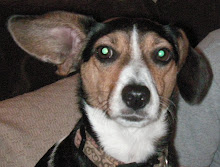If you've been hanging out on the internet (moving around in the tubes) recently, you may have noticed a lot of links on pages that look like this:or sometimes:
or sometimes:
![]()
or, who knows, maybe you've never noticed. Either way, what are these cute little three-letter-acronym buttons for? They're for RSS (Really Simple Syndication). While the name suggests that RSS is "Really Simple", a lot of people have a hard time understanding what it's for, if they want to use it, and what benefit they can get out of it. This blog entry will hopefully straighten this all out for you and get you on the RSS bandwagon.
A lot of people use the internet for porn reading the news. Unfortunately, most major news sites are filled with links to videos you have to pay for, and ads, and all sorts of junk so that it's a pain to sift through all that to get to the content that you're looking for. That's where RSS comes in. It's all about CONTENT!
Imagine a world where you can get all the news, blogs, comics, movie reviews, weather reports, etc. all in one place, and without any of the extra junk that comes with web pages. Then imagine that in that world you can decide how and when you view the information. Imagine instantly, constantly updating content. Now, stop imagining! That's what RSS can do! RSS gives you all the information you already use the Internet for, but all in one place. It's easy to read, easy to organize, and free of excess junk.
Now, how does it work? People who make websites can have their data automatically munged into a format called XML. This treats all pages as a series of titles and content. So, for a news site, the titles will be the headlines and the content will be either the articles or a snippet of the articles. The titles are usually links to the real article on the news site. XML does not say how the information should be organized or displayed, it just has the information. Now, all that is well and good, but how do YOU use RSS? First you need an RSS reader. This is the software that allows you to view all of the feeds you want to see. I can recommend two of them. One is an add-on to firefox called Sage, the other is a website, and is my favorite RSS reader: Google Reader. With either reader, you supply the link to the feed, and they grab the feeds for you and tell you when there are new items available for the feed. You can get the feed address by click on the buttons that I put in above. For example, the feed for my blog is:
So, go get yourself an RSS reader and start enjoying the world of RSS. I'll put some links here to RSS feeds that I follow. Please add comments with any questions you have and I'll post the answers.
BBC NEWS (World):
http://newsrss.bbc.co.uk/rss/newsonline_world_edition/front_page/rss.xml
Daily Show Text Headlines:
http://www.comedycentral.com/rss/tdsheadlines.jhtml
Daily Dilbert Cartoons:
http://www.caesar.nl/CaesarRSS/DilbertRSS.aspx
Fark.com:
http://www.fark.com/fark.rss
Rotten Tomatoes: Movies:
http://i.rottentomatoes.com/syndication/rss/complete_movies.xml
Yahoo! News: Most Viewed:
http://rss.news.yahoo.com/rss/mostviewed
UPDATE:
I have added a new section to my blog on the right that is a feed of my Google Reader Shared Items. This is a feature of Google Reader where I can share RSS feed items that I think other people might be interested in. I'll try to share a few every day, so check back!

No comments:
Post a Comment